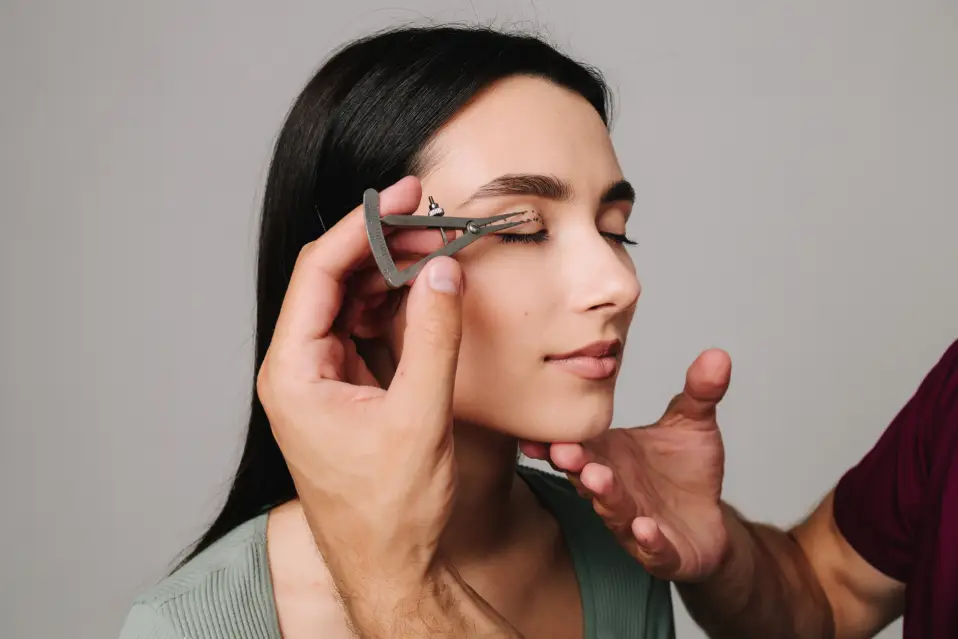
At Prof Chrysis Sofianos Plastic Surgery Johannesburg, we specialise in blepharoplasty, a transformative surgical procedure designed to rejuvenate the appearance of your eyes. Whether you’re seeking an upper blepharoplasty to lift drooping eyelids or a lower blepharoplasty to address under-eye bags and wrinkles, our personalised approach ensures natural, refreshed results.
What is Blepharoplasty?
Blepharoplasty, commonly known as eyelid surgery, is a procedure that removes excess skin, fat, or muscle from the eyelids to correct signs of ageing or functional impairments. This surgery can significantly enhance your appearance by:
- Removing sagging skin that creates a tired or aged look.
- Correcting overhanging eyelids that may impair vision.
- Eliminating puffiness or bags under the eyes.
- Smoothing fine wrinkles around the lower eyelids.
Types of Blepharoplasty
Upper Blepharoplasty
Upper blepharoplasty targets the upper eyelids, removing excess skin and fat to restore a youthful and alert appearance. This procedure is ideal for:
- Treating drooping or sagging upper eyelids.
- Improving vision obstructed by overhanging eyelid skin.
- Achieving a smoother and more defined upper eyelid contour.
Lower Blepharoplasty
Lower blepharoplasty addresses puffiness, bags, and fine lines under the eyes. By repositioning or removing fat and tightening the skin, it rejuvenates the lower eyelid area. This procedure is ideal for:
- Reducing under-eye bags and puffiness.
- Correcting hollows or a sunken appearance.
- Smoothing wrinkles and crepey skin beneath the eyes.
Surgical Techniques: Transcutaneous vs Transconjunctival Lower Blepharoplasty
Transcutaneous Blepharoplasty
Advantages:
- Ideal for patients with significant skin laxity or wrinkles.
- Allows for simultaneous skin tightening and fat repositioning.
- Offers comprehensive correction for advanced ageing signs.
Transconjunctival Blepharoplasty
The transconjunctival technique involves making an incision inside the lower eyelid, leaving no visible scar. This approach focuses on fat repositioning without removing excess skin.
Advantages:
- Best suited for younger patients with minimal skin laxity.
- Leaves no external scar.
- Reduces the risk of lower eyelid malposition (e.g., ectropion).
During your consultation, Prof Chrysis Sofianos will assess your unique anatomy and goals to determine the most appropriate technique for your lower blepharoplasty.
What to Expect from Your Blepharoplasty
Consultation:
Your journey begins with a detailed consultation to discuss your concerns, review your medical history, and outline your goals. Dr Sofianos will evaluate your eyelid anatomy and recommend a tailored surgical plan, whether for upper blepharoplasty, lower blepharoplasty, or a combination of both.
Procedure:
Blepharoplasty is performed under local anaesthesia with sedation or general anaesthesia, depending on the complexity of the procedure. The surgery typically takes 1–3 hours, and you can often return home the same day.
Recovery:
- Most patients experience mild swelling and bruising, which subsides within 7–10 days.
- Sutures, if used, are usually removed within 5–7 days.
- Final results become more apparent after 4–6 weeks as healing progresses.
Benefits of Blepharoplasty
- Rejuvenated Appearance: Achieve brighter, more youthful eyes.
- Improved Vision: Remove excess skin that may obstruct your field of vision.
- Minimal Downtime: Quick recovery with lasting results.
- Boosted Confidence: Look and feel refreshed and rejuvenated.
Why Choose Prof Chrysis Sofianos?
Table of Contents
If you’re ready to revitalise your eyes and restore a youthful appearance, contact Prof Chrysis Sofianos Plastic Surgery Johannesburg today. We are here to guide you through every step of your journey to a brighter, more confident you.
